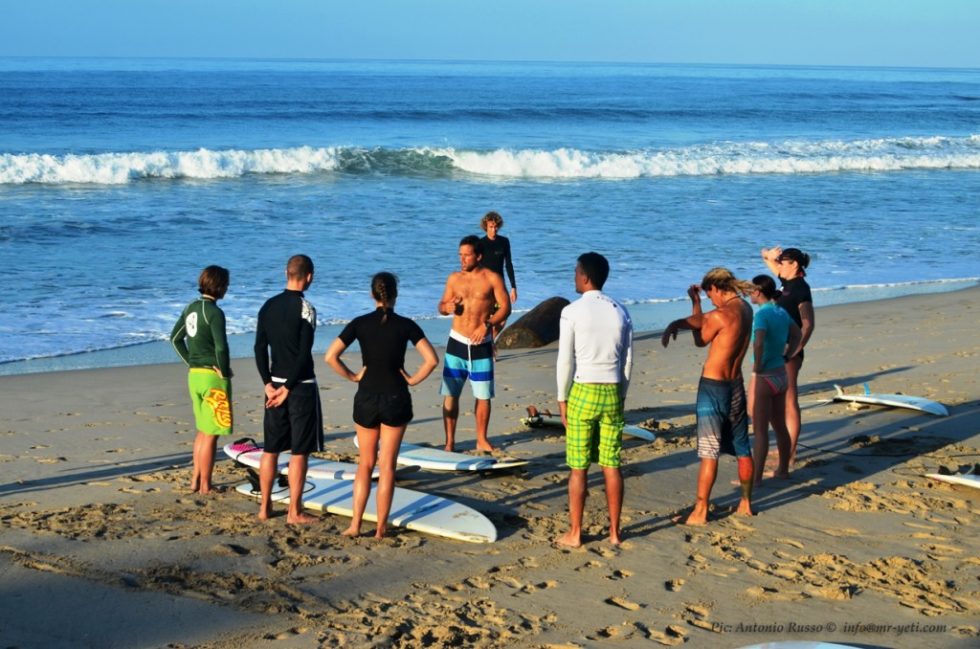What you wear for surfing is crucial for comfort, safety, and performance. Here’s a general guideline for what to wear when surfing:
- Swimsuit or Wetsuit:
- In warmer waters, a swimsuit (board shorts for men, and a bikini or one-piece for women) is sufficient.
- In colder waters or during cooler seasons, wear a wetsuit. The thickness of the wetsuit should be chosen based on the water temperature. Thicker suits provide more insulation. A 3/2mm wetsuit is suitable for mild conditions, while a 4/3mm or thicker wetsuit is better for colder waters.
- Make sure when deciding whether or not to wear a wetsuit, consider the water temperature, not just the temperature outside!
- Rash Guard:
- A rash guard is a lightweight, moisture-wicking shirt that helps prevent chafing and provides sun protection. It can be worn under a wetsuit or on its own in warm conditions. Wearing it on top of your wetsuit allows you to be more visible – just avoid blue!
- Booties:
- In cold water or on rocky beaches, consider wearing neoprene booties. They provide insulation and protect your feet from sharp rocks and reef.
- Surf Hat:
- A surf hat with a brim or a surf cap can protect your face and eyes from the sun, reduce glare, and keep water out of your eyes. Make sure it has a strap to stay on your head!
- Surf Gloves:
- In extremely cold water, surf gloves can help keep your hands warm and maintain dexterity while handling the surfboard.
- Leash:
- This attaches to your board and is strapped around your ankle. Always wear a leash attached to your ankle or calf to prevent your board from drifting away when you fall.
- Wax:
- Apply surfboard wax to your board to provide grip and prevent slipping. The type of wax you use may vary depending on water temperature.
- Sunscreen:
- Use waterproof sunscreen with high SPF to protect your skin from harmful UV rays. Make sure it’s reef-safe to avoid harming the ocean environment.
- Sunglasses (optional):
- Polarized sunglasses can help reduce glare and protect your eyes from the sun. Be sure to use a strap to keep them secure while surfing.
- Earplugs (optional):
- Some surfers wear earplugs to prevent ear infections, especially in polluted water or when dealing with persistent ear issues. If you don’t surf often and don’t tend to have ear issues, you probably don’t need to worry about these.
Remember to dress appropriately for the specific surf conditions and water temperature. It’s also a good idea to have spare clothes, a towel, and a change of clothes for after your surf session. Always consider safety and comfort when choosing your surfing attire, and make adjustments based on the conditions and your personal preferences.
If you still have questions, feel free to book a lesson to understand what a typical surf session looks like for you!






